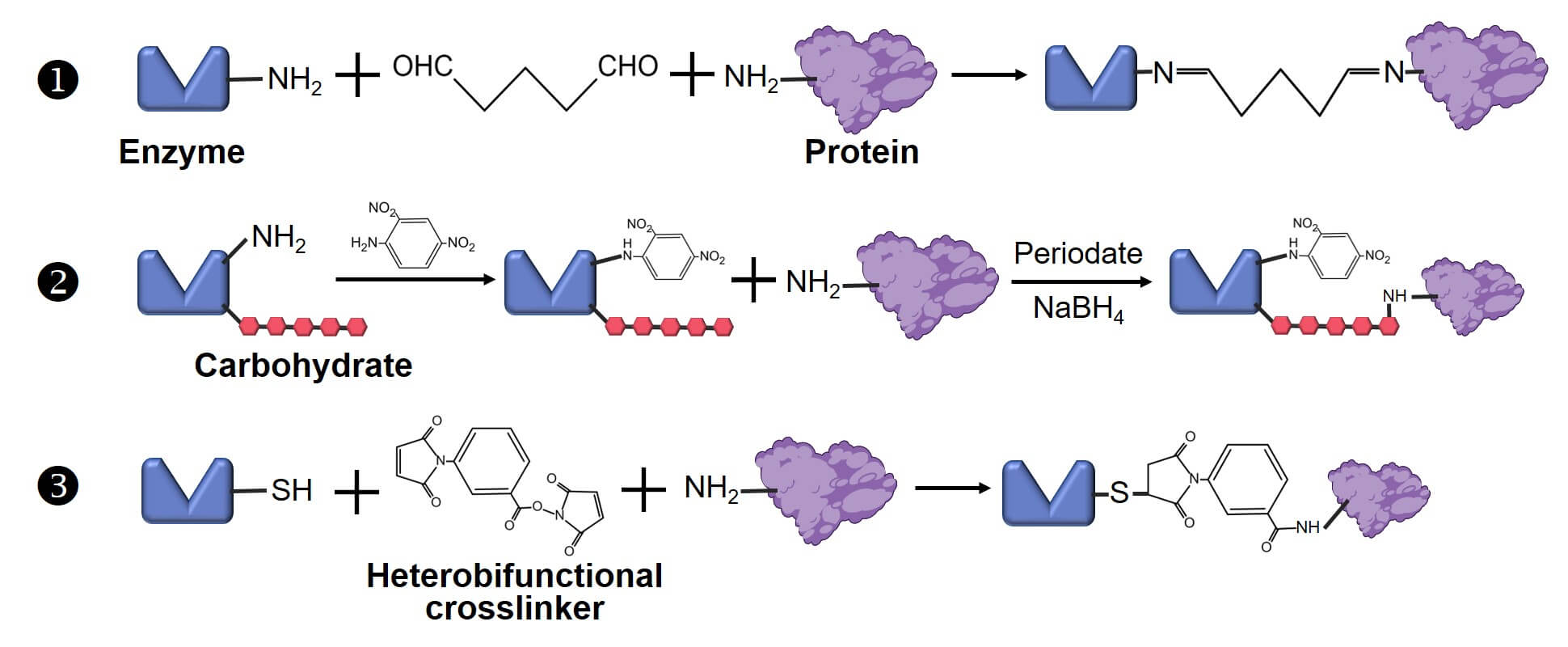Custom Protein-Enzyme Conjugation Service
Introduction of Enzyme Conjugation
Enzymes are widely used in bioconjugation for detection purposes. The catalytic activity of enzymes can convert substrate molecules into chromogenic, fluorescence, or chemiluminescent products, which can be easily detected or quantified through imaging, microscopy, and spectroscopy. As a result, enzyme-linked immunosorbent assay (ELISA) has become the most important type of immunodetection system.
Horseradish Peroxidase (HRP)
HRP, derived from horseradish, is an enzyme with a molecular weight of 40,000 and a high carbohydrate content. It consists of a colorless zymoprotein combined with a deep brown iron porphyrin. The polysaccharide chains of HRP are often used in conjugation through periodate oxidation. The size of HRP is advantageous in the preparation of antibody-enzyme conjugates because smaller conjugates can penetrate cellular structures better than larger polymer complexes. Another unique advantage of HRP is its stability. HRP can remain stable for many years in a freeze-dried state, and it also maintains good activity when modified with urea or periodate oxidation.
Alkaline Phosphatase (AP)
AP is a widely distributed membrane-bound glycoprotein found in many organisms, from bacteria to humans. Most conjugates produced with AP utilize forms isolated from calf intestine. AP is often the preferred enzyme for labeling oligonucleotide probes as it can withstand moderately high temperatures in hybridization analysis better than HRP. In ELISA procedures, AP also maintains enzyme activity during long-term substrate development, thus enhancing sensitivity.
β-Galactosidase (β-Gal)
β-Gal is an essential hydrolytic enzyme that is widely present in microorganisms, plants, and animals. β-Gal is isolated from Escherichia coli and possesses excellent characteristics, making it suitable for use in ELISA systems in coupling antibody molecules. Its optimal pH range of 7-7.5 helps to avoid interference from endogenous β-Gal during immunohistochemical staining. Additionally, β-Gal contains a large number of free thiol residues, allowing for specific conjugation with antibodies. Therefore, manufacturing antibody-β-Gal conjugates is much easier than those conjugated with other enzymes.
Our Protein-Enzyme Conjugation Methods
 Fig. 1 The methods of protein-enzyme conjugation.
Fig. 1 The methods of protein-enzyme conjugation.
![]()
Glutaraldehyde Method
Glutaraldehyde is one of the most widely used procedures to link proteins and enzymes by reductive amination. Its reaction sensitivity is highest in ALP, followed by glucose oxidase and peroxidase.
![]()
Periodate Method
This method is primarily used for conjugating HRP with proteins. The sugar residues of HRP are mildly oxidized by sodium periodate, generating active aldehyde groups that can form highly active conjugates with antibodies.
![]()
Maleimide Method
This method activates proteins using crosslinkers containing maleimide groups, primarily for conjugating β-Gal. It avoids the generation of thiol groups on antibodies, which can be modified by reducing agents or thiol-reactive reagents.
For over a decade, Creative Biolabs' scientists have been dedicated to exploring protein-enzyme conjugation research. When preparing enzymatic conjugates, we prioritize the use of highly purified and active enzymes, which helps maintain excellent enzymatic activity and improve reaction rates in the conjugates. Moreover, we offer customized enzyme conjugation services for glucose oxidase, lysozyme, and malate dehydrogenase, among others. Select the products and conjugation methods that best suit your needs, and unlock high-quality conjugates that offer dependable support for your research and experiments. Contact us for more details!
Recommended products
Related Sections
